How to win a research communication contest Last year’s UTokyo 3MT winner shares experience and tips

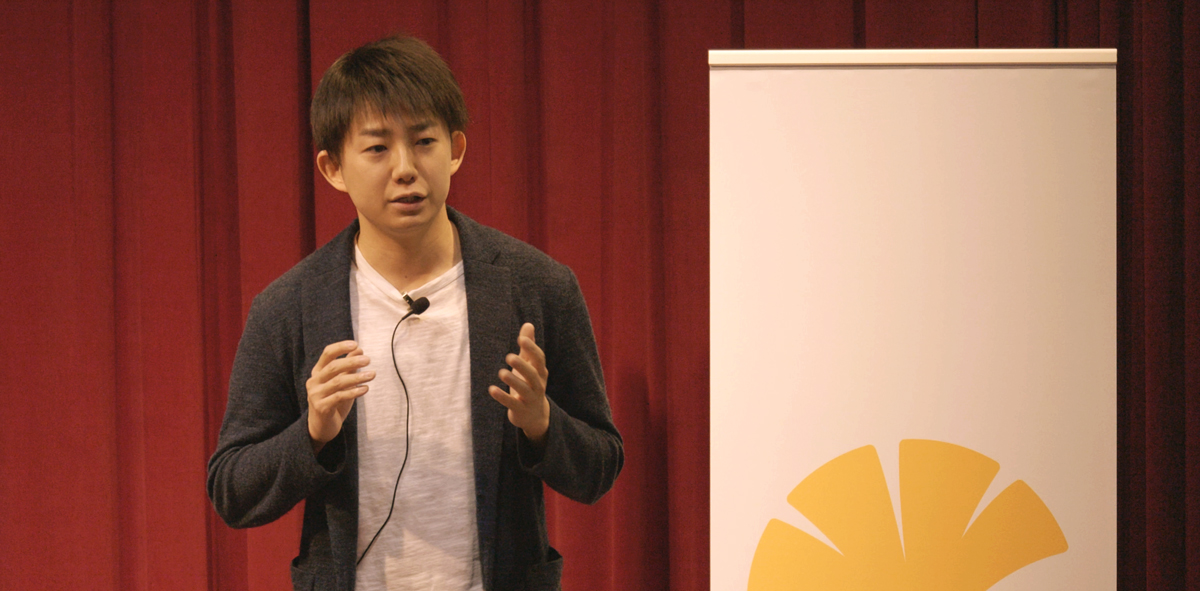
Takanori Shiga speaks about his research on guide dogs at the 3MT (Three Minute Thesis) competition held at the University of Tokyo in May 2019. © 2020 The University of Tokyo.
In May 2019, the University of Tokyo hosted its first 3MT (Three Minute Thesis) competition. 3MT is a research communication contest where Ph.D. students, using only one slide, present their research in English in front of a nonexpert audience within three minutes. The competition, which began in Australia in 2008, is now held at over 600 universities in 86 countries around the world.
Takanori Shiga, a fourth-year doctoral student from the Department of Veterinary Medical Science at the Graduate School of Agricultural and Life Sciences, participated in the inaugural UTokyo contest, winning the grand prize.
Shiga talked about his research on diseases that afflict guide dogs due to selective breeding and how to identify genetic factors behind the ailments. He went on to compete in the 3MT Asia-Pacific competition held in October at the University of Queensland in Brisbane, Australia. Unfortunately, Shiga — one of 56 representatives from across Australia, New Zealand, Oceania, Northeast Asia and Southeast Asia — did not make it to the finals, where 10 students competed. Nevertheless, Shiga says he found his experience in Australia educational and rewarding.
As UTokyo plans to hold another 3MT competition this year (the application deadline is March 29, 2020), we interviewed Shiga about his experience and advice he has for people interested in entering the competition.
What led you to enter 3MT last year?
Professor Hiroyuki Nakayama, the principal investigator in my lab, saw a notice circulated by the university about the event. He urged me to apply, saying I have a knack for presenting to the public.
What was your first impression of 3MT?
I had never presented in public before, except in front of my fellow lab members and at academic conferences. I had hardly spoken overseas or in English, except from one occasion earlier last year. So to be honest, I was initially hesitant about speaking at an event where I would be ranked or evaluated (laughs).
When did you start preparations and how?
I started about a month before the competition. First I wrote a script, then had it looked over by Assistant Professor James Chambers, who is a native English speaker. I also had it checked by Associate Professor Kazuyuki Uchida and Professor Nakayama. After I revised the script based on their advice, I memorized and recited the speech for the first time for the three faculty members. Chambers-sensei corrected my pronunciation. They also gave me feedback on the slide I was going to present.
I gave another presentation to them after I modified the slide, then I did it once more, this time for the lab’s 30 or 40 students. By then, I had memorized my script and my pronunciation was OK, but many people commented on my presentation style, saying how my eyes darted around and how I needed to look more comfortable when speaking.

It sounds like your lab gave you its all-out support.
Yes. Also, I personally asked two Americans in my neighborhood to listen to my speech. One of them runs an English conversation school, so I went to her house and had her correct my pronunciation. The other person and I couldn’t find time to meet, so I called her and asked her to listen to me by phone. So I had my speech heard by people a total of five times. It helped me overcome my anxiety about presenting in English.
You recited your speech in the toilet after coming home late at night from your lab, right?
That’s right. I did that every day. Ms. Caitlin Devor, a science communicator at the Division for Strategic Public Relations, also advised me to practice every day to reduce anxiety so I could relax when I present at the event. I recited at least once a day for one or two weeks before the competition. I also looked for an empty classroom on campus and practiced there alone every day.
What was it like to present at 3MT at UTokyo?
I was pretty relaxed, and I was able to look people in the eye when I presented. I enjoyed the experience. Looking back at the video later, I realized that I got stuck once early in my speech, because I had breathed in at the wrong time. But after that I was able to speak smoothly.
Were you confident that you would win?
To be honest I never expected to win, but I thought I might have a chance at the People’s Choice Award. So when the winner of that award was announced, and it wasn’t me, I thought that was it. So I was happy to win the grand prize.
How did you prepare for the Asia-Pacific competition?
There was a bit of time between UTokyo 3MT and the Asia-Pacific competition, and I got tied up with an academic conference in Japan and other matters. I started preparing again about a month before the Asia-Pacific event. Again, I practiced both at home and at school. But one regret I have is that I didn’t ask others to listen to my speech. I could have asked people other than the ones who had heard my presentation before. When you practice by yourself, you won’t know when you start going in the wrong direction.
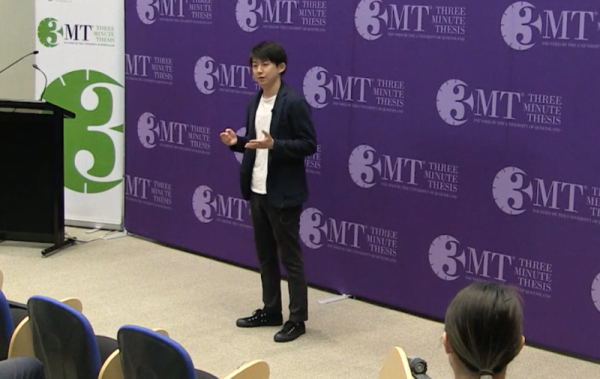
Tell us how the finals went at the University of Queensland.
First, we had the semifinals. Fifty-six people including me (who had won regional qualifiers) participated. When I went to the designated area at the university, a tent had been put up. The breakfast and lunch were served in buffet style. As we gathered, someone from 3MT announced that the participants would be separated into two groups for the semifinals. It wasn’t decided how many from each group would make it to the finals, but a total of 10 would be selected, we were told. So the presentations I watched were those of the 28 who participated in the semifinals in my room and the 10 finalists.
Who were the other contestants?
There was one other presenter from Japan, the winner of another 3MT competition held in western Japan. She was a student at Gifu University. Most participants hailed from the rest of Asia, the Middle East and of course Australia, where 3MT started, and New Zealand. What surprised me is that many other speakers knew about me even before I presented.
Really?
They had checked my video from UTokyo 3MT. I hadn’t checked the videos of other presenters, so I felt they had an advantage over me already. I checked my own video shortly before going to Australia, and noticed the number of views on my video had suddenly spiked. So rival competitors were watching me. I did watch the videos of past winners, but not the ones of people I was going to compete with. That’s one thing I regret.
Some of the contestants said right after seeing me, “You must be Shiga, the guide dog guy,” or, “I saw your presentation. It was pretty good.” I was blown away and taken aback. I wish I had been able to say, “Oh, YOU must be the one who talked about …”
What did you think of the presenters there?
As it turned out, someone who presented earlier than me in my group won the competition. I was overwhelmed by the high caliber of the presenters and got nervous, to be honest. Nobody was stuck or looked nervous, and everyone was confident. Looking back I feel I probably did better at UTokyo 3MT than at the semifinals. I seriously could not predict who would win. Everyone sounded great.
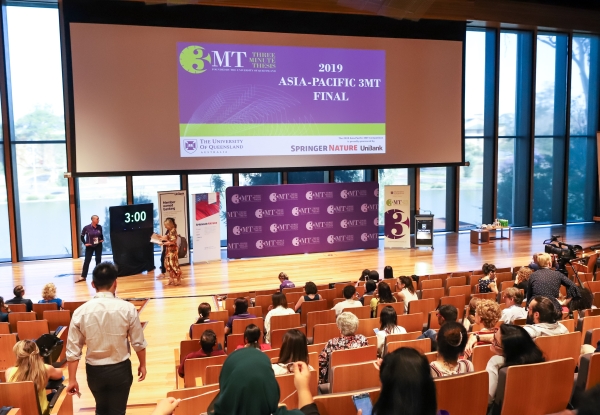
What was great about their presentations?
This might sound abstract, but I felt the speakers had an aura. I felt like I was listening to famous people. The presenters were roughly of two types: the ones who went for laughs, and the ones who, like me, talked seriously. Either way, many of them were great at drawing in the audience.
Many participants were from the University of Queensland, where the contest was held. Some of their family members were there to cheer them on. 3MT was a much bigger deal than in Japan, and I felt that people’s know-how and experience had been accumulated there.
Did you mingle with other participants?
Yes. In addition to those who said they watched my video, a Chinese participant from New Zealand came over and talked to me. He was very energetic, and after we spoke for about a minute he hugged me (laughs). He was like, “Let’s do our best!” I was impressed with the presenters’ ability to make friends. During the buffet meals, I was in a corner, talking with the other Japanese participant, but most other participants were eager to talk with everybody. A faculty member in charge of 3MT talked to me in person after the event, congratulating me and asking questions about my research.
Did you have time to sightsee?
I arrived in Brisbane the day before the competition and toured the city a little bit. Then on the day of the event, the semifinals were held in the morning, and the finals were held in the afternoon. After that, a party was held, where a buffet dinner was served. I stayed for two more days after that, and did some sightseeing.
This is not related to the competition, but Brisbane is a nice city. The inner-city area has a river running through it and has good ferry services. You can get anywhere in the city by bus and ferry. Local graduate students, who served as volunteers, took us out for sightseeing. We exchanged contact details and met up, and they showed us around the city. I thought it was great that you can make friends as well.
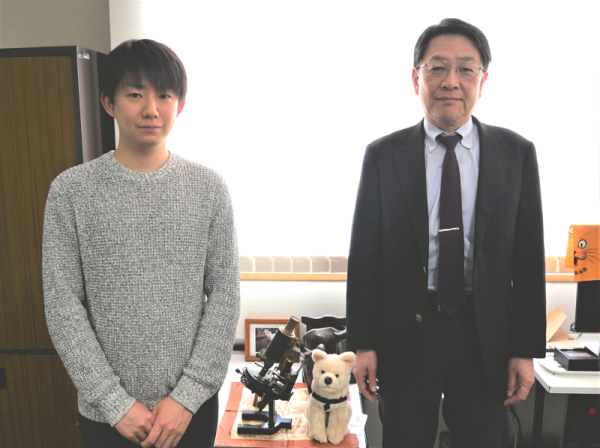
What would you tell people who are considering to participate in 3MT?
I think it’s important for participants to practice every day and get many people to listen to your presentation. You need to do that with people who are close to you, and those who are not. I feel it’s important to get as many chances to practice, and get various opinions.
If your lab is supportive, it helps to get your speech heard by your professor first, because he or she has the expertise in your field. Then after that, you should present it to your family member or a foreign student in a different lab. The key is to get punched early (laughs). Members of your lab might not have the slightest interest in your speech and might pay no attention. You need to get used to that, because you need to have a strong heart to present on the big stage.
Do you think participating in 3MT has helped your career as a researcher?
I hope so (laughs). I want to join the university faculty, and I think I will have more occasions to attend an academic conference overseas or speak even in Japan in English. So the experience has given me confidence. Also it’s nice to be able to put it on my resume.
Comment from Professor Hiroyuki Nakayama
We have an undergraduate-level class in which students create presentation materials in English and speak to the class, either in English or Japanese. I had long thought that Mr. Shiga was talented as a speaker, so when I learned about 3MT I asked him if he wants to participate.
You obviously need research skills, which goes without saying. But you also need training on communicating that research to people. I think you can become a top researcher only after you master these two skills. I advised Mr. Shiga to cut back on the volume of information in his slide. You are not presenting at an academic conference, so you need to modify the slide for the audience. 3MT provides you with a great opportunity to become aware of such things. Even if you don’t present, it’s a great opportunity to see how others present and what kind of presentations would appeal to the audience.
Comments from UTokyo 3MT winners
Jennifer Chia Wee Fern (Runner-up Award)
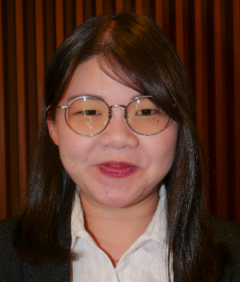
I have spent the prize money mostly on field research in Japan to collect data for my research. Also, I have spent some of the prize money to sponsor my trip to participate in the conference that was held in Hawaii in January. It was my first experience to travel and present in the U.S. I am very grateful for the opportunity that 3MT had provided me. I had a lot of professors from universities in Malaysia congratulating me on my achievement. It turns out the 3MT competition is widely known in my home country.
Tiffany Joan Sotelo (People’s Choice Award)
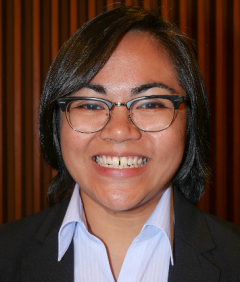
I used the prize money to attend a microbial ecology conference in Hiroshima. The 100,000 yen that I won covered my participation fee, hotel fees and transport for the conference. Since I am originally a biochemist, my attendance at that conference helped me learn things directly from people in the field of microbial ecology. The funding from winning in the 3MT gave me a chance to attend a conference that I could probably not have attended otherwise.
Interview/Text:Tomoko Otake






